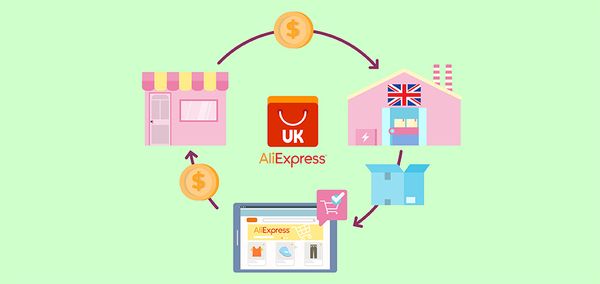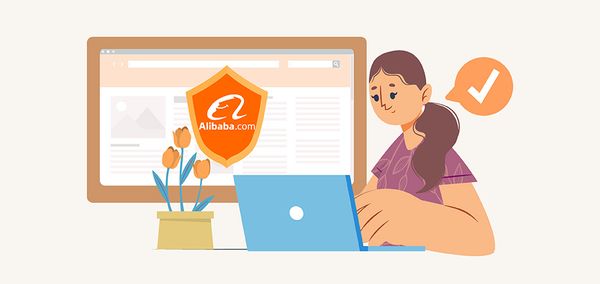How to Choose a B2B eCommerce Platform

In the United States, sales from business-to-businesses are very close to reaching a trillion dollars. The scale of the business-to-consumer eCommerce sector is dwarfed by this. B2B eCommerce is still in its infancy as most firms are still sorting out the fundamentals of strategy and development. However, one thing is becoming abundantly clear: the need for a platform to manage and expand sales activities.
Why Your B2B eCommerce Platform Is So Crucial
How customers do their research, engage with your business, and make purchases is undergoing profound shifts. The practice of making pre-bookings for large bulk purchases is practically extinct. Is your company prepared for the trend toward showrooming and the change in purchasing patterns of your greatest clients, who now place purchases that happen more often but for a lower total value?
| Get Started Now to Grow Your Online Business with the Best AliExpress Dropshipping Tool - DSers! |
If you want to be successful in the digital space, you have to center your efforts on the user experience. According to Gartner's research, 89% of companies now anticipate that customer experience will soon be the primary differentiator in business competition. Your ability to provide a certain kind of experience to both your customer and the end consumer is impacted by the B2B eCommerce platform that you decide to use. Because of this, selecting the most effective B2B platform is an essential step in the company’s decision-making process.
How to Determine Which B2B eCommerce Platform Is Right for You
Functionality
Selling to other businesses is not the same as selling to individual consumers. When selling to other companies, firms that sell to other businesses have particular challenges and restrictions. Your system is going to be required to accommodate those specific requirements. Examine the many platforms that are capable of providing functionality such as:
Responsive Design
Customers that purchase online do so using a variety of gadgets. They may start the buying process on a mobile device like a phone or tablet, but they will likely finish it on a desktop computer. This is a very typical sort of customer, and your platform needs to be able to serve them. Because consumers are often preoccupied throughout the day with running their businesses, the content of your website should display correctly across all devices.
It will be much simpler for your buyers to browse your inventory and complete their purchases if you make it possible for your best customers to place orders on the go after business hours using any device of their choosing. This will enable your buyers to concentrate on the reasons they went into business for themselves in the first place.
Self-Service
On the floor, both buyers and sales employees want to be able to search for information and discover solutions to problems on their own. The experience they have with your eCommerce platform should allow them to achieve that too.
Customers should be able to access their accounts whenever they feel the need to do so and locate shipping information, track orders, authorize estimates, see real-time inventory availability, and manage their accounts. Again, the self-service possibility outside of your working hours, which might be very different from retail hours, is essential to gain the trust of your accounts and makes it simpler for customers to make purchases from you. Retail hours can vary substantially.
If a retail sales associate is unable to see the available inventory, they may be hesitant to showcase and sell your items. This is done to prevent disappointing a customer who is ready to make a purchase, which might result in a loss of commission.
Pricing Tailor-Made for Individual Customers
The ability to provide customer-specific pricing and products for sale is one of the distinctive requirements of B2B eCommerce. In contrast to business-to-consumer transactions, pricing might shift based on the kind of client. Your platform should provide you with the flexibility to post varied rates for each of your clients and to provide exclusive availability of things to certain accounts.
Payment Options
Customers that make purchases from businesses do so in a manner distinct from consumers. Typically, businesses will place greater purchases. It's also possible that the orders will be placed on a recurrent basis or if inventory is depleted. Credit card payment is becoming more popular among purchasers, and the option to provide extended payment periods is also becoming increasingly significant. In a nutshell, you need pliable payment choices that enable your customers to accomplish their professional objectives.
Make it possible for your clients to pay a single invoice, many bills, or even only a portion of the total amount owed by them.
Integration of Sales Representatives
Many different types of sales companies depend heavily on their sales representatives. If you have sales representatives, providing your team with access to see and manage orders, the ability to make orders on behalf of their clients, and the ability to gain insights to help develop more convincing in-person sales presentations is essential for winning tactical battlegrounds. Integrating sales representatives provides real-time access to data and enables your team to be more attentive to the needs of their clients, which ultimately speeds up the process of acquiring new customers.
Various Other Factors to Consider
The use of your consumer-facing online shop for business-to-business commerce has the potential to affect both channels. Buyers, for instance, do not want to see too pushy direct-to-consumer strategies on your website since this may discourage them from wanting to do business with you. Also, promotions aimed at consumers, messages aimed at consumers, and even some items themselves may not connect with your B2B buyers.
Other factors to take into account include the following:
- Shipping rates that are particular to the wholesale market to provide price discounts or minimum purchase quantities
- Capability to evaluate wholesale purchases before upsell customers placing their orders
- Accurate display of inventory from several warehouses, allowing for faster and more effective shipment to fulfill stringent client deadlines and be more responsive.
- Detailed reports that provide a current and accurate picture of the state of your company's health and vitality
- High-volume merchants may place orders on their terms using either the list or image view ordering system.
- Incorporation of Retail Sales Associates who can examine inventory and add items to B2B orders placed by the buyer
The Platform Kind
When searching for an online shop that caters to B2B transactions, you are likely to run across a variety of various kinds of platforms. There is a possibility that you may come across the words hosted and cloud-based websites. When deciding on a platform, here are some crucial considerations to keep in mind.
Hosted, premise, and cloud-based models are compared
When using a platform that is hosted on the premises, the software will need to be installed locally. You are responsible for locating and maintaining the servers on which the program will be installed, which will most likely involve access to internal technical resources.
The service providers are responsible for hosting a cloud-based commerce platform that is completely hosted. You can visit your online shop using any web browser, provided that you are connected to the internet. The differences between these sorts of platforms have repercussions in many other areas, including cost, customization, maintenance, PCI compliance, and security.
The Difference between Open Source and Out-of-the-Box
You will have the ability to make changes to the platform's code if you choose an open-source eCommerce platform. When it comes to the design and configuration of your B2B website, this offers you unrestricted freedom of expression. It is important to note that open-source systems are prone to code conflicts, which may result in more frequent crashes as well as increased maintenance needs. Ensuring open source security is also critical to address potential vulnerabilities and safeguard your platform from threats When using open source platforms, you will need to have an internal IT team to maintain and improve upon existing solutions.
This will require a greater initial investment as well as continuous expenditures to keep people employed. If you are just getting started, a ready-made solution will make it easier for you to get up and running fast. Build vs purchase is a choice that is made more difficult since the costs of Out-of-the-Box solutions for B2B Commerce software, which are becoming more popular, are divided among a large number of customers.
Maintenance
You will be responsible for the upkeep of your website if you go with an eCommerce platform that is hosted on your premises. Maintaining and paying for your servers, dealing with malfunctioning software code, and addressing any difficulties that arise when your website fails are all part of your obligations. When you run your eCommerce platform on your own, you will be responsible for paying this fee.
The majority of the time, cloud-based solutions will both set up and host your eCommerce website. That's the reason why most people choose the enterprise WordPress hosting. If there is a new version of the program released, they will install it automatically. They are monitoring the site's functioning 24 hours a day, seven days a week, and they must address any problems that arise.
It all comes down to how much control you want to have in comparison to the additional obligations that come along with each kind.
Security for PCI
Compliance with PCI standards is required of all online retailers. When a consumer purchases from your store, this verifies that the information on their credit card is kept secure by your business. This might be included or a part of your obligations, and it could leave your firm vulnerable to security breaches. This depends on the sort of platform you use.
| Get Started Now to Grow Your Online Business with the Best AliExpress Dropshipping Tool - DSers! |
Because the data is stored on their servers, several cloud-based services take care of providing this protection for you. They are in charge of administering it as the organization. When it comes to other hosted solutions, it is the responsibility of the B2B supplier to ensure that all of the standards for PCI compliance are satisfied. You will be responsible for ensuring that your payment gateways are up to par with the industry requirements.
Be careful to inquire about the PCI compliance process with the eCommerce provider.
Cost
Last but not least, the various kinds of platforms have a significant impact on the expenses involved and how they accumulate. In most cases, the cost of a hosted solution will be higher. You will be responsible for the expenses of the software licensing, the maintenance of the server hosting, the charges of the developers, and your in-house information technology staff.
You will normally pay a charge monthly for hosting, maintenance, and support for fully-hosted cloud-based SaaS or PaaS systems. This cost covers all of these aspects. They will all be combined into one package, which results in a cheaper monthly cost overall.
Find out exactly what services you are paying for and evaluate whether or not the investment is worthwhile. If a solution is capable of meeting ninety percent of your goals, it is often more effective to operate within the limitations of a vendor rather than deal with difficulties. This is particularly true if the vendor is prepared to close the remaining ten percent of the gap for your company. Think about whether or not it is worthwhile to spend your time and money on a solution that will provide your company with the lowest possible total cost of ownership.
Integration
Your eCommerce platform has to interface smoothly with the other systems you use, in addition to having the capability and kind you require. This guarantees that your physical and online channels are capable of working together in a coordinated manner. Integration makes it possible for you to become a more effective multichannel retailer and to provide your consumers with a more satisfying shopping experience as a result.
When looking for a new platform, you should think about how it will interact with the ERP system that you now use. Can it readily manage the information that is sent by your vendors? Will it synchronize both your offline and online inventories, as well as the accounting systems, so that you may scale up your sales operations?
The Next Steps to Take
Investing time and effort into research is necessary to choose the optimal B2B Commerce platform for your company. It's an investment in the success of your company. Your platform ought to be able to assist you in both the short-term and the long-term in the execution of your plan.
As is the case with B2C Commerce, the mere fact that you construct it does not guarantee that customers will sign in and make purchases. Think about ways that you might make your B2B site more enticing for buyers to come frequently as part of their workflow and consider putting those ideas into action.













 Company
Company
 Why Choose DSers
Why Choose DSers
 Blog
Blog
 Help Center
Help Center




 Live Chat
Live Chat